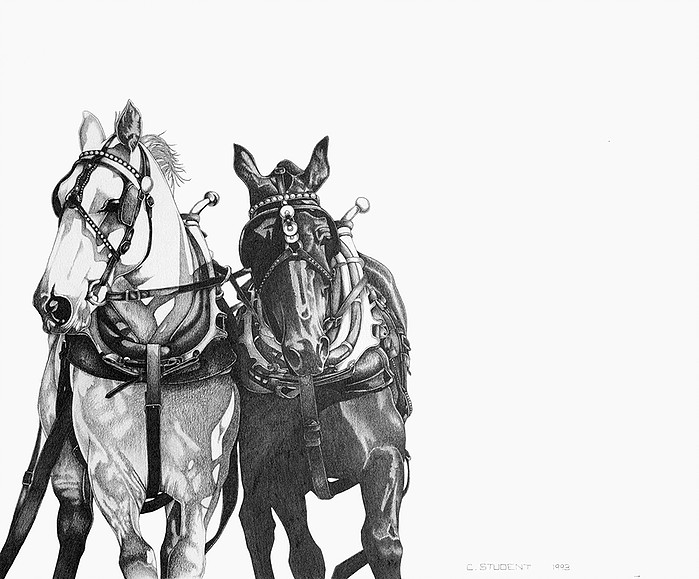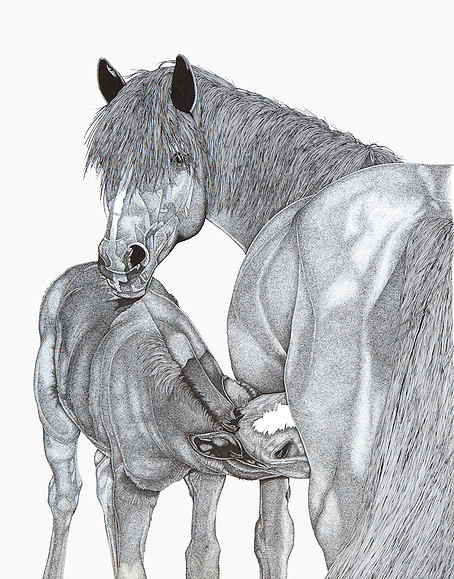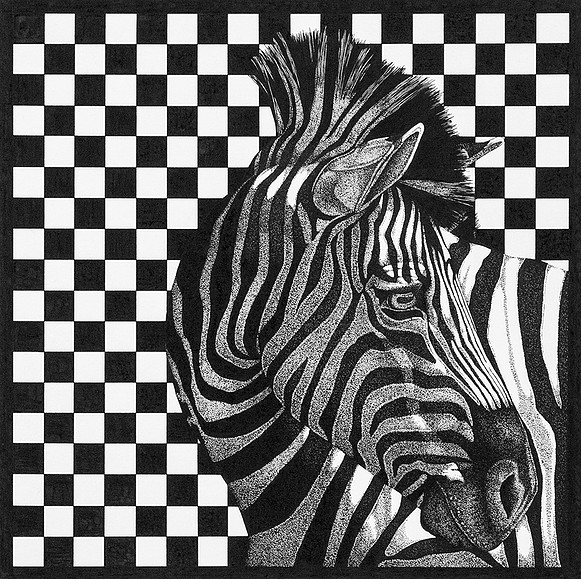Country Lifestyles
February 2018 Profile: For The Love Of Horses And Art – Cheryl Student
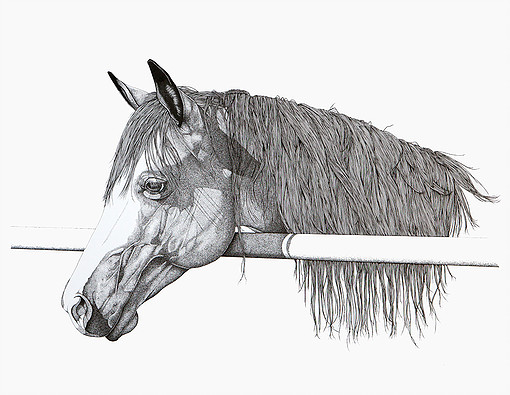
By Jessica Crabtree
Winston Churchill said, “There is something about the outside of a horse that is good for the inside of a man.” Those words and that notion are pivotal to the life and art made by Cheryl Student, art pieces from graphite to pen and ink as well as oil pastel. Her No. 1 muse, model, subject and passion to document is the horse. “I can’t remember a time I didn’t love horses,” Student admitted. A Texan now, her upbringing looked very different from her current location.
Student was raised more than 1,800 miles east, just outside of New Haven, Conn. “My grandpa on my mom’s side was a produce farmer,” she explained. Her earliest memories of horses come from that same grandfather, “He had a team he used.” Student and her grandfather shared a common passion, a love for horses.
As Student grew, a trend became apparent. Two things consumed her life, horses and drawing. One came about the same time as the other. To negate either was out of the question nor dictate which was stronger. “I was little and would pester my mom, ‘What should I draw next?’ My mom would answer ‘People, how about drawing people if you can draw people, you can draw anything.”’
Art and horses simultaneously evolved throughout Student’s life. Drawing from the young age of five, perhaps her mother helped influence her art as well as encouraged it. “My mom had a job working with Archie comics. She would ink parts of the penciled drawings. I remember my mom being down in our basement, where her studio was, doing this,” Student stated. Not only was her mother an influence, but her aunt was a working artist.
To read more pick up a copy of the February 2018 NTFR issue. To subscribe call 940-872-5922.
Country Lifestyles
While We Were Sleeping
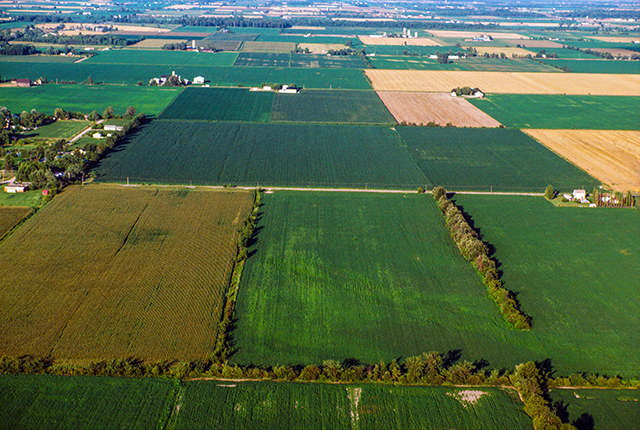
By Martha Crump
That old adage, “What you don’t know won’t hurt you.,” may have some basis in truth when applied to minor situations. However, when what you don’t know is presented in the form of a “Trojan Horse” and is what amounts to an incredible attempt to fleece American property rights, it becomes a different story altogether.
To put this unbelievable tale together, we need to step back to Joe Biden’s 2021 Executive Order which pledged commitment to help restore balance on public lands and waters, to create jobs, and to provide a path to align the management of America’s public lands and waters with our nation’s climate, conservation, and clean energy goals.
To read more, pick up a copy of the April issue of NTFR magazine. To subscribe by mail, call 940-872-5922.
Country Lifestyles
Lacey’s Pantry: Strawberry Sorbet
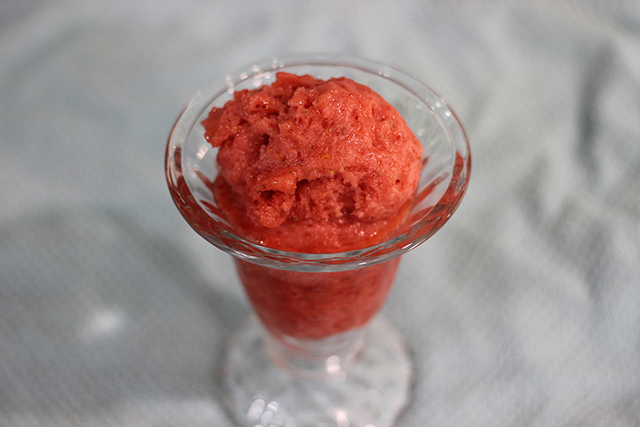
By Lacey Vilhauer
Ingredients:
1 whole lemon, seeded and roughly chopped
2 cups sugar
2 pounds strawberries, hulled
Juice of 1 to 2 lemons
¼ cup water
Directions:
Place the chopped lemon and sugar in a food processor and pulse until combined. Transfer to a large bowl. Puree the strawberries in a food processor and add to the lemon mixture along with juice of one lemon and water. Taste and add more juice as desired.
To read more, pick up a copy of the April issue of NTFR magazine. To subscribe by mail, call 940-872-5922.
Country Lifestyles
A Mountain Out of a Molehill

By Nicholas Waters
As winter plods along – come Spring and gopher mounds – homeowners and farmers find themselves playing a familiar song – fiddling while Rome is burning.
Let’s make a mountain out of a molehill. Those mounds on your lawn and pasture could be moles, but they’re more than likely gophers; Plains Pocket Gophers to be pragmatic – Geomys bursarius to be scientific.
These rodents dig and chew, and the damage they can do goes beyond the mounds we mow over. Iowa State University cited a study in Nebraska showing a 35 percent loss in irrigated alfalfa fields due to the presence of pocket gophers; the number jumped to 46 percent in decreased production of non-irrigated alfalfa fields.
The internet is replete with academic research from coast-to-coast on how to curtail gopher populations, or at least control them. Kansas State University – then called Kansas State Agricultural College – also published a book [Bulletin 152] in February 1908 focused exclusively on the pocket gopher.
To read more, pick up a copy of the April issue of NTFR magazine. To subscribe by mail, call 940-872-5922.
-

 Country Lifestyles1 year ago
Country Lifestyles1 year agoScott & Stacey Schumacher: A Growth Mindset
-

 Equine7 months ago
Equine7 months agoThe Will to Win
-

 Country Lifestyles7 years ago
Country Lifestyles7 years agoStyle Your Profile – What your style cowboy hat says about you and new trends in 2017
-

 Country Lifestyles4 years ago
Country Lifestyles4 years agoAmber Crawford, Breakaway Roper
-

 HOME7 years ago
HOME7 years agoGrazing North Texas – Wilman Lovegrass
-

 Country Lifestyles7 years ago
Country Lifestyles7 years agoDecember 2016 Profile, Rusty Riddle – The Riddle Way
-

 Country Lifestyles8 years ago
Country Lifestyles8 years agoJune 2016 Profile – The man behind the mic: Bob Tallman
-

 Outdoor9 years ago
Outdoor9 years agoButtercup or Primrose?

